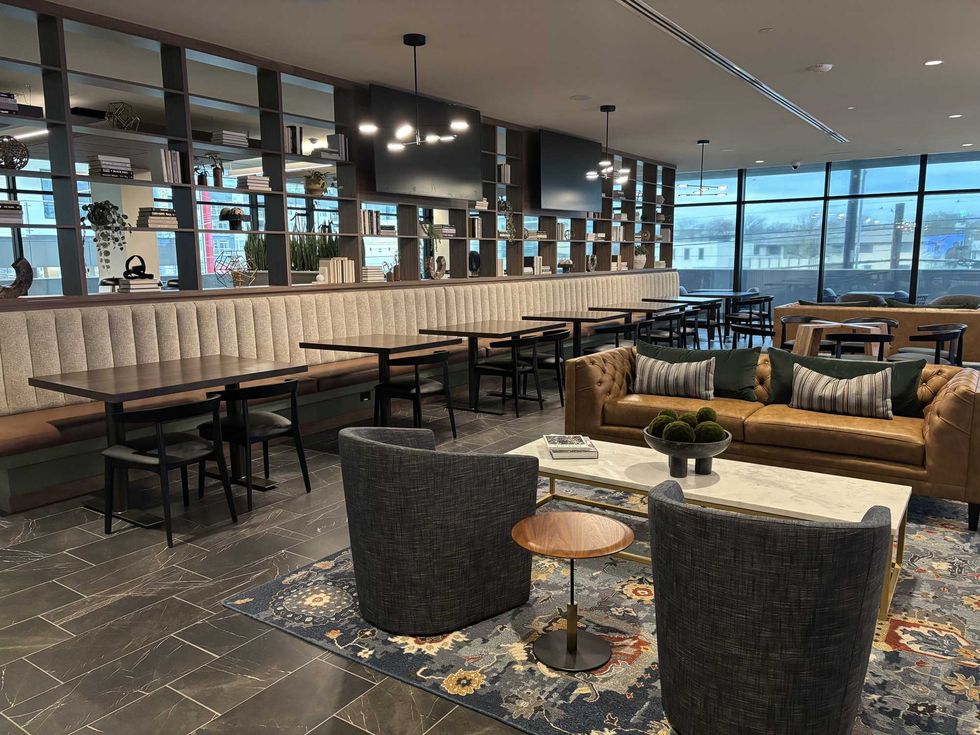Be Patient
Innovative project brings new downtown promenade and skyline changes to Austin

In 2017, the University Medical Center Brackenridge ceased operations, an occasion that inspired second line parades, media blitzes, and emotional social media posts. To outsiders, the kind of fanfare that surrounded Brackenridge's closing probably seemed unusual. But for Austin, the end of the 100-year-old institution represented more than just a hospital closing — it marked a new era for the city.
Over the past two years, the Brackenridge campus has remained largely unused. When the Dell Seton Medical Center opened across the street, all hospital operations and most offices moved along with it, leaving the original buildings empty. But, beginning this summer, the medical campus will begin a major renovation, one that will not only change the landscape at 15th and Red River streets, but transform the surrounding neighborhood forever.
Innovation by design
The property runs along 15th Street between Red River Street and I-35 Frontage Road, and includes the old hospital as well as office buildings and parking garages. Over the course of the next decade, those buildings will be demolished and replaced, further enhancing what is now known as the Innovation District.
“This redevelopment effort is part of a health care transformation taking place in Austin based on an unprecedented partnership between a local health district, a research university, and a hospital system,” said University of Texas at Austin President Gregory L. Fenves in a recent release.
The partnership that Fenves alludes to is that between Central Health, which owns the property, UT, and the 2033 Higher Education Development Foundation, a nonprofit created to benefit UT and which signed the 99-year lease with Central Health. (Yes, it's confusing.)
According to UT, Central Health will receive $460 million for use of the property, beginning with the first payment in March. As part of Central Health's mission, that money should go to providing health care for low-income residents of Travis County.
“We’re redeveloping this property with the sole purpose of funding our mission of caring for people with low income," said Central Health board chairperson Guadalupe Zamora. "We’re grateful to have partners like the 2033 Fund, Dell Med, and UT Austin to make this happen.”
Block 164
Among the first projects is the demolition of Block 164, a 1.2-acre site along Red River Street. Currently, a three-story office building sits on the lot, which will be replaced with a glittery 17-story office building expected to be completed by 2022. According to a Dell Med rep, demolition is scheduled to begin this summer.
The new building will house some of the medical school's operations as well as "future strategic partners, who will team up with faculty members and students to rethink health and health care," according to UT.
A (red) river runs through it
As part of the redevelopment, Red River Street will be "straightened out" and will eventually run through the old Brackenridge campus rather than curve around it like its current incarnation. A rep with the City of Austin says traffic plans and a timeline are still under development but confirms that the current curvy version of Red River will remain open to traffic until the new straight street is complete.
And as for the curvy Red River, in addition to being a good band name, the old version will eventually be closed to traffic and transformed into a pedestrian and bike promenade. With the adjacent Waterloo Neighborhood Park and Moody Amphitheater slated to open in 2020, the promenade will provide another attraction for the revamped green space and an opportunity to revive a long dormant part of downtown Austin.
"[The area]'s not really active right now," notes Meredith Bossin, director of engagement for Waller Creek Conservancy. Eventually, Bossin says the Innovation District and Waterloo Park will coexist in a unique way, with the park giving students, workers, and neighbors an opportunity "to interact with people in different industries."
"It fits well with our vision of the park," she says.

 Pilates is one of the many modalities on the schedule.Photo courtesy of Life Time
Pilates is one of the many modalities on the schedule.Photo courtesy of Life Time


 This giant sauna doubles as a social amenity.Photo courtesy of Life Time
This giant sauna doubles as a social amenity.Photo courtesy of Life Time The Life Time Lounge offers another place to hang out.Photo courtesy of Life Time
The Life Time Lounge offers another place to hang out.Photo courtesy of Life Time